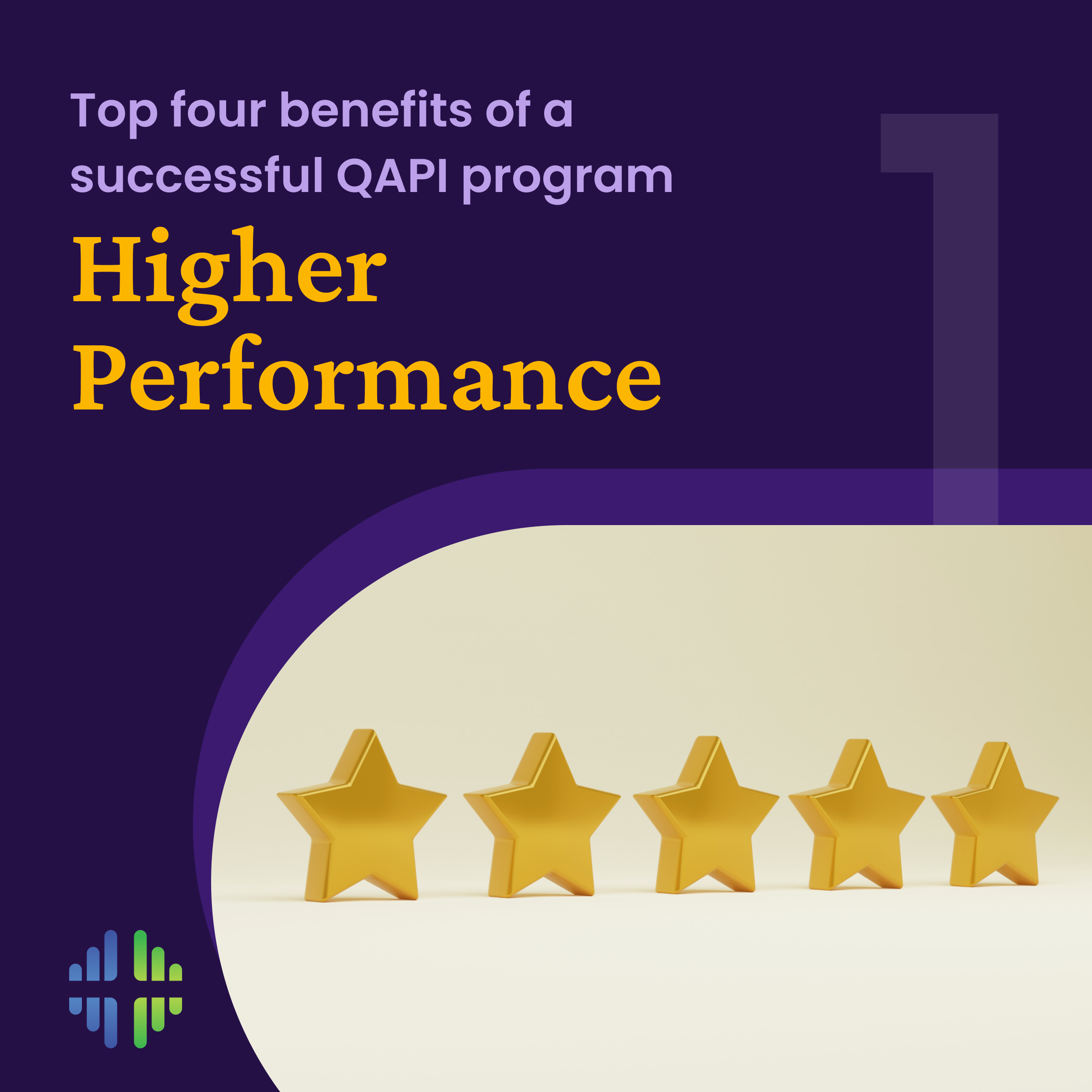2 min read
Achieving CMS Survey Readiness: Data-Driven Performance Improvement
With CMS intensifying its oversight on hospice and home health organizations, adapting to a proactive compliance posture is essential. There are no...
4 min read
QAPIplus : Nov 25, 2025 8:56:22 AM

Quality improvement is a data-driven, systematic approach that supports measurable progress in healthcare processes, outcomes, and performance. Agencies that lack structured tools often fall into reactive, manual workflows that hinder their ability to respond to issues, prevent medical errors, or demonstrate measurable improvement.
Before diving into real-world quality improvement examples in healthcare, it’s important to understand the frameworks that guide this work. Models like the Model for Improvement, Lean Six Sigma, and the Plan-Do-Study-Act (PDSA) cycle help healthcare providers use the scientific method to test changes, monitor outcomes, and scale improvements. These are core to any quality improvement initiative.
Below are five high-impact examples of quality improvement projects that drive better patient outcomes, enhance organizational performance, and eliminate waste across the care continuum. Each section explores what can go wrong, how QAPIplus transforms the process, and practical tips to strengthen your performance improvement efforts.
Quality assurance (QA) is a systematic approach to ensuring healthcare delivery meets established standards and consistently delivers safe, effective, and high-quality care. In post-acute care, QA is not a one-time task but an ongoing process that spans compliance, performance tracking, and staff training.
QA helps:
When built into daily workflows, QA becomes the backbone of your quality improvement efforts. Combining QA with data collection and root cause analysis leads to actionable insights and sustainable results.
The Pitfall: Without structured tools, QAPI management often relies on manual spreadsheets, binders, and siloed data collection. This reactive approach increases the risk of missing documentation, delayed audits, and survey deficiencies.
What QAPIplus Does: QAPIplus turns QAPI into a living program with centralized dashboards, automated reporting, and CMS/accreditor-aligned templates. It enhances visibility, supports quality measurement, and ensures you’re always ready for surveys. Post-acute professionals can focus more on improving outcomes and less on chasing paperwork.
Tips to Improve:
This practical approach to QI management improves both compliance and care delivery.
The Pitfall: Quality improvement projects often fall apart due to vague goals, inconsistent follow-up, and unclear ownership. Many agencies treat PIPs as one-off fixes rather than structured process improvement efforts tied to data.
What QAPIplus Does: The platform’s QAiPI-PIP Agent uses incident trends and audit data, and system alerts to auto-generate performance improvement projects aligned with CMS and accreditor requirements. This reduces human error, eliminates guesswork, and drives focused QI efforts.
Tips to Improve:
Lean Six Sigma Insight: Applying Six Sigma tools such as Fishbone Diagrams or the 5 Whys method helps identify root causes and reduce variation in post-acute care delivery.
The Pitfall: Manual compliance processes increase cognitive and administrative load, contributing to burnout and turnover. This undermines patient care and weakens your QI initiatives.
What QAPIplus Does: Automated reporting tools, intuitive interface, and centralized policy access help streamline processes and reduce clinician burden. This frees up time for clinical excellence and encourages staff participation in ongoing QI efforts.
Tips to Improve:
Improvement efforts thrive when quality becomes a shared, patient-centered mission.
The Pitfall: Many agencies lack visibility into key quality metrics like timely initiation of care or patient satisfaction until quarterly reports arrive. This delays timely interventions and increases the risk of losing Medicaid and Medicare incentive payments.
What QAPIplus Does: QAPIplus surfaces clinician- and branch-level insights in real time. The platform connects quality measurement to improvement projects, allowing for timely and targeted interventions that enhance health outcomes.
Tips to Improve:
Care Coordination Strategy: Improved care coordination ensures patients get the right services at the right time, a key lever in improving patient outcomes and reducing hospitalizations.
The Pitfall: Too often, agencies spend more time collecting data than actually using it. Manual reporting creates delays, increases opportunities for human error, and prevents timely decision-making. Even worse, teams frequently burn countless hours building graphs, visuals, and PowerPoints to “prove” the meaning behind the data, leaving no time or energy to address the real problems once the meeting ends.
What QAPIplus Does: QAPIplus reverses that dynamic. By automating report generation and integrating real-time data dashboards, teams no longer scramble to collect and display information, it’s already ready. Instead of spending hours preparing for the meeting, teams can spend the meeting solving problems. This shift supports faster root-cause identification, ongoing learning, and improved clinical outcomes, because attention is finally focused where it belongs: action, not paperwork.
Tips to Improve:
Healthcare improvement depends on moving from data-rich to insight-rich environments.
Effective quality improvement examples in healthcare share three traits: clear goals, data-driven actions, and sustained accountability. In post-acute delivery, where resources are tight and patient needs are complex, agencies can’t afford to rely on outdated systems.
QAPIplus equips post-acute professionals with practical quality improvement tools, AI-supported workflows, and scalable frameworks. From eliminating waste to improving patient outcomes, our platform empowers teams to lead successful QI initiatives that last.
Ready to improve quality with confidence? Book a demo with QAPIplus today to learn more.

2 min read
With CMS intensifying its oversight on hospice and home health organizations, adapting to a proactive compliance posture is essential. There are no...

2 min read
With CMS intensifying its oversight on hospice and home health organizations, adapting to a proactive compliance posture is essential. There are no...

1 min read
To achieve QAPI success, it is crucial to expand QAPI beyond your quality team and engage your entire organization. By doing so, QAPI becomes less of...